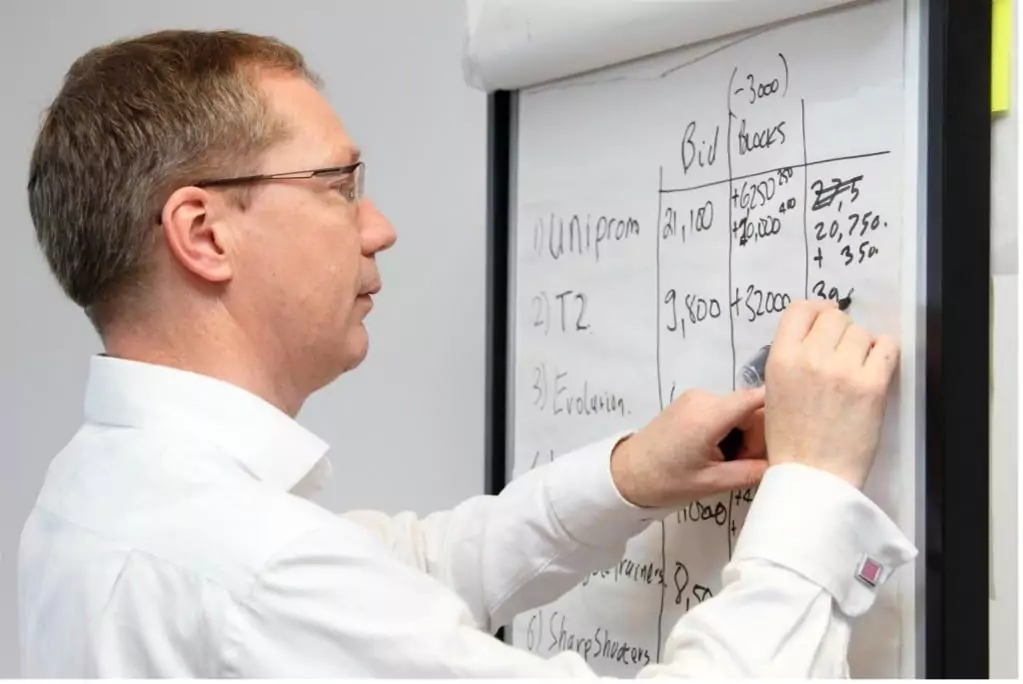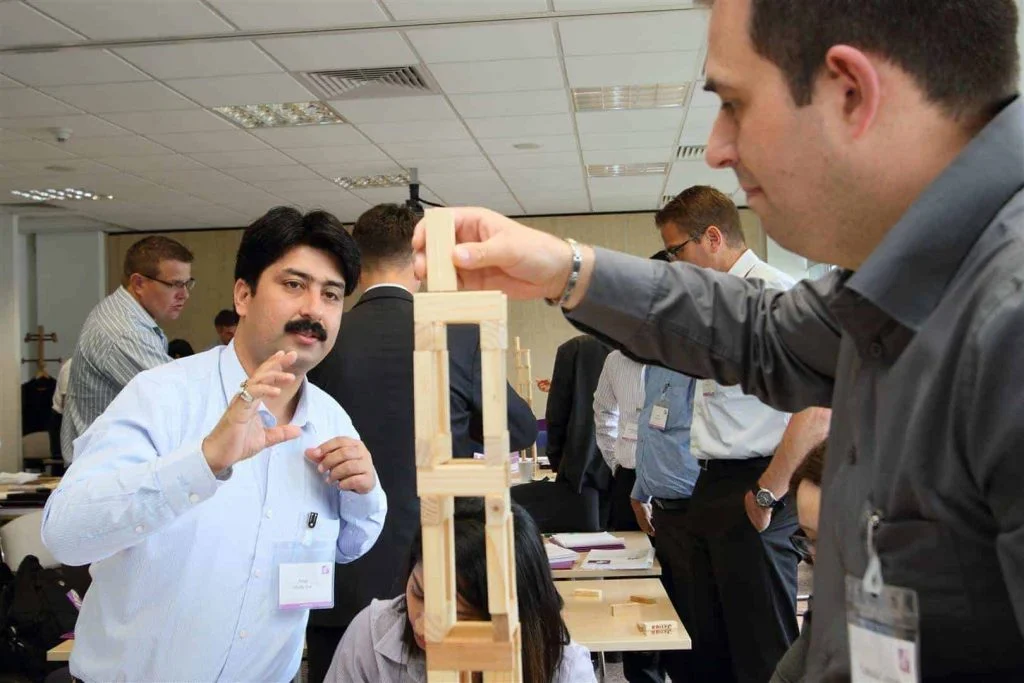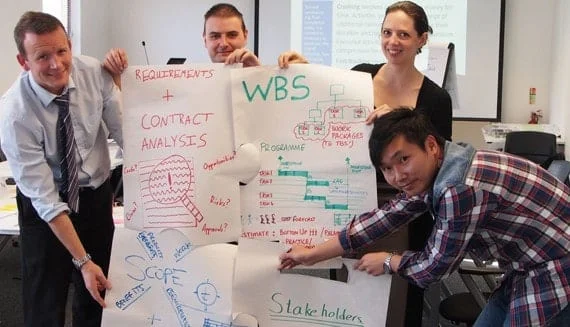Tailoring the Course to You
At Parallel, we are experienced at tailoring the Project Management in Practice course to individual client needs. The course is designed in a way to allow us great flexibility to ensure the course meets it’s objectives.
In a bespoke project management training course, it is crucial to ensure that the training programmes are specifically targeted towards meeting the needs of the business. Through the years, we have developed a structured development process that works closely with our corporate clients to deliver training that caters to their unique requirements and delivers measurable business benefits. To achieve these goals, we follow four simple phases that can be tailored to suit your needs. These phases are as follows:
- Discovery phase: Defining the learning outcomes and course outline
- Design phase: Creating the course materials and completing a dry run
- Delivery phase: Scheduling and managing the delivery of the training
- Evaluation phase: Monitoring short-term and long-term feedback and evaluating the business impact.
Using the course outline below, we work closely with clients to develop a detailed curriculum, materials, and activities that align with the learning objectives identified. This might mean enhancing, removing, adding or reducing certain topics from the list below. If your organisation has identified a weakness in risk management, for example, we will enhance this area of the course to ensure a greater focus.
During the course development, we will also assist in selecting appropriate training methodologies, creating presentation materials, case studies, exercises and resources, such as textbooks and videos.
Course Structure
Course Introduction
An introduction to the course, learning objectives and structure. Delegate introductions and discussion of their individual needs, the skills they bring to the group and the ideals for improving project delivery within their team
How Projects Impact on Business as Usual?
In this session we explore how projects generate change in business as usual and an overview of the tools and techniques used by project managers to implement change. This will include clarity about the roles of the sponsor, project manager and users and the use of a project lifecycle to provide a structured approach to project management.
Exercise: Mapping the project management roles across the project lifestyle
Tools and techniques used
- Project lifestyle and role mapping
Defining the Project Objective
As the start of any change it is important to fully understand the objectives, constraints and assumptions to be made. In this module we will use analysis of the external context using the “windows of wisdom” to identify the success criteria for projects, the constraints that apply and the role the project plays in corporate strategy.
Syndicate Exercise: An analysis of external project context for a case study or a real delegate project.
Tools and techniques used
- The windows of wisdom to identify the project success criteria, context, environment and internal political drivers
Stakeholder Management
In this session we will also develop a plan for project communications based on an analysis of the different stakeholder groups.
Syndicate Exercise: A stakeholder analysis and communications planning for a case study or a real delegate project.
Tools and techniques used
- Stakeholder analysis
- Communications planning
Developing the Project Schedule
Understanding the dependencies between the delivery of different work packages and teams at an early stage is vital to the smooth delivery of projects. The precedence diagram is the method to develop these linkages between activities, work packages and teams. We will explore a range of linking relationship available to develop a fair representation of the work plan.
This session includes:
a.Development and use of the precedence diagram.
b. Typical dependencies including finish-start, start-start, finish-finish.
c. The use of leads and lags.
d. Critical path
e. Resource and cost planning
Tools used are:
- Critical path analysis
- Resources planning including levelling and smoothing
- Developing a cost profile of S-curve
Syndicate Exercise: defining the project schedules for a case study or a real delegate project.
Estimating
Accurate estimating of cost and timescales is vital for many project plans. In this section we look at different tools and techniques to produce accurate estimates.
This includes comparative, parametric and bottom up estimating techniques.
Exercise producing and estimate with a tolerance of 1% accuracy.
Techniques used are
- Comparative estimating
- Parametric estimating
- Bottom up estimating
Risk Management
Every project is subject to risk and also generates risk for the business. In this session we look at how to manage risk on a project. Including risk identification, assessment and planning techniques.
Exercise evaluating the risks for our case study project.
Techniques used are
- Checklist, prompt lists, assumption analysis, Delphi, interview, document reviews, the probability impact grid and the risk mitigation strategies.
Project control, reporting and change control
Successful project execution requires regular communications to ensure any issues are identified early and action is taken to keep the project on track.
This requires simple but effective reporting and a rigorous control of change. In this session we will look at case studies which have suffered from poor change control and report and evaluate how these have affected the project outcomes.
Exercises change control case study
Tools used are
- The project control cycle
- Highlight reporting using red, amber green status
- Change control and scope management
Tower Build 2 Exercise
A practical exercise to demonstrate the application of project management to a project
Self-reflection and action planning
The final session includes the presentation of the plans prepared in syndicate exercises for peer review by the group, followed by individual action planning to define the next steps to apply what has been learned in the course in the workplace.
Individual Exercise: Planning next steps in the workplace
To find out more about taking this course, please complete the form below



